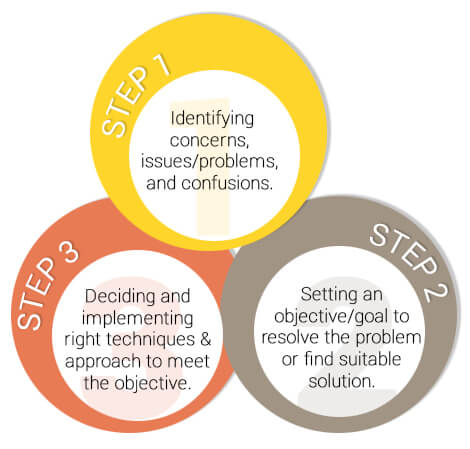ABOUT
MY APPROACH

What is Counselling?
There is a big difference between a professional counsellor and a person who uses some counseling skills as part of their role, for example their role as a friend or colleague. A professional counsellor is a highly trained individual who is able to use a different range of counselling approaches with their clients.
Counselling is a professional relationship that empowers diverse individuals, families and groups to accomplish mental health, wellness, education and career goals.
Sometimes the term “counselling” is used to refer to talking therapies in general, but counselling is also a type of therapy in its own right.
Counselling and Psychotherapy
Both ‘psychotherapy’ and ‘counselling’ are terms that are used to describe the same process. Both terms relate to overcoming personal difficulties and working towards positive changes.
Counselling is a helping approach that highlights the emotional and intellectual experience of a client, how a client is feeling and what they think about the problem they have sought help for.
Psychotherapy, however, is based in the psychodynamic approach to counselling – it encourages the client to go back to their earlier experiences and explore how these experiences effect their current ‘problem’.
Psychotherapy theories provide a framework for therapists and counsellors to interpret a client’s behavior, thoughts, and feelings and help them navigate a client’s journey from diagnosis to post-treatment. Theoretical approaches are an understandably integral part of the therapeutic process.
Each theory has its own reasoning and backed by deep research. No one approach is right or wrong.
There are various theoretical approaches contributed by works of many great thinkers & fathers of psychology such as:
- Psychoanalysis / Psychodynamic Theory by Sigmund Frued is based on understanding that the unconscious forces drive behaviour. Free talking with the Counselor/therapist, dream analysis are amongst some of the techniques used to understand the unconscious communications.
- Behavioural Theory – Classic Conditioning by Ian Pavlov is based on the belief that behavior is learned and hence can be unlearned or corrected.
- Humanistic Approach – Client centred therapy by Carl Rogers focuses on the belief that clients control their own destinies. This approach cares most about the present and helping clients achieve their highest potential termed as self-actualisation.
- Cognitive Theory by Aaron Beck focuses on how people’s thinking can change feelings and behaviors. Therapy based on cognitive theory (CBT) is brief in nature and oriented toward problem solving.
COUNSELLING & THERAPY
Holistic/Integrative Therapy
I believe every client is unique and hence the approach or therapy needs to be tailor made to client’s problem. Holistic and integrative therapy involves integrating various elements of different theories to the practice
I use the technique of analysing drawings & verbal metaphors. It is believed that once you start drawing or narrating the conscious cognitive guard is dropped and the subconscious takes over within few minutes of indulgence. The drawing you make communicates your underlying subconscious thoughts & feelings which at times either you are not aware of or don’t know how to express.
In the narration/free talking technique, the clue of actual deeper feelings & thoughts are in the verbal metaphors used to express & hence decoding them can help the client get the causes and solutions to their issues & concerns.
In addition to traditional talk therapy, I may also include non-traditional therapies such as hypnotherapy or guided imagery or NLP. The key is to use the techniques and psychotherapy tools best suited for a particular client and problem.

The Role of the Counsellor
The role of the counsellor is to enable the client to explore many aspects of their life and feelings, by talking openly and freely. The counsellor neither judges, nor offers advice. The counsellor gives the client an opportunity to express difficult feelings such as anger, resentment, guilt and fear in a confidential environment.
The counsellor may encourage the client to examine parts of their lives that they may have found difficult or impossible to face before. There may be some exploration of early childhood experiences in order to throw some light on why an individual reacts or responds in certain ways in given situations. This is often followed by considering ways in which the client may change such behaviours.
What to expect from counselling sessions
Each step involves the comfort and agreement from the client at every step. You may be offered a single session of counselling, a short course of sessions over a few weeks or months, or a longer course that lasts for several months or years, with each session of up to 60 minutes duration.
Integrity & confidentiality are common to every single session and every client.




